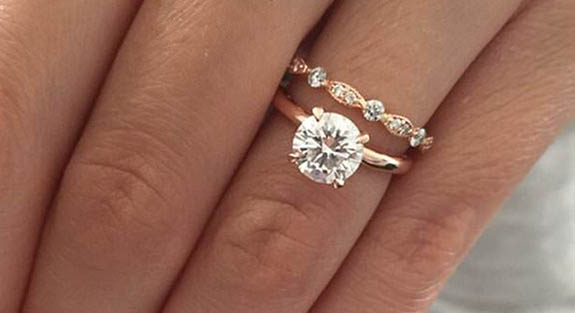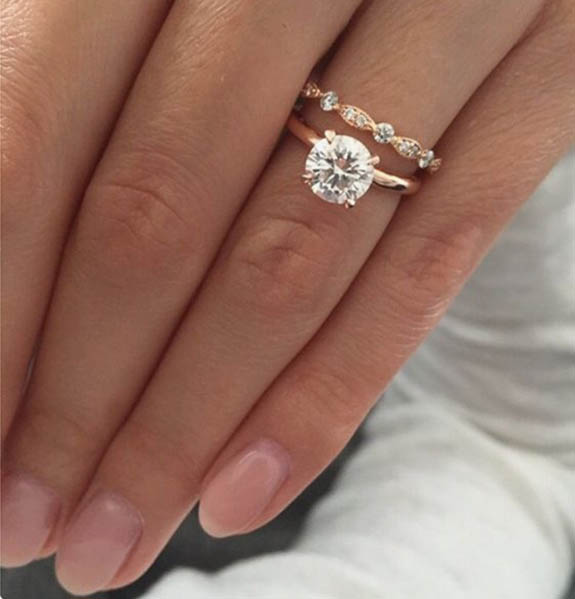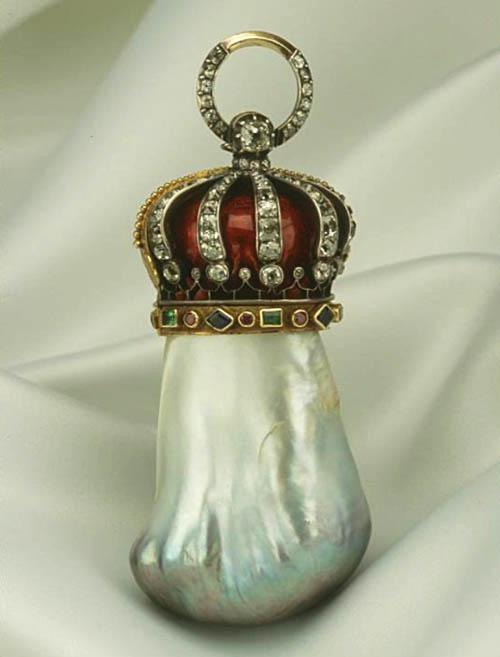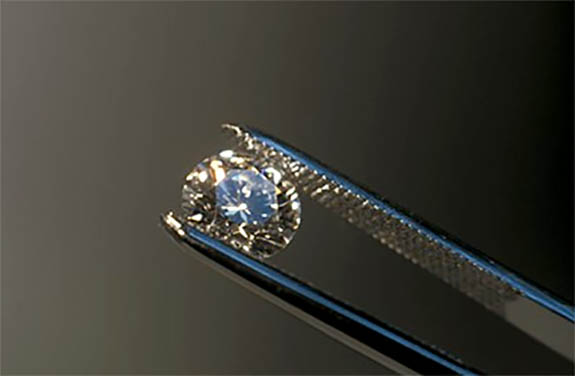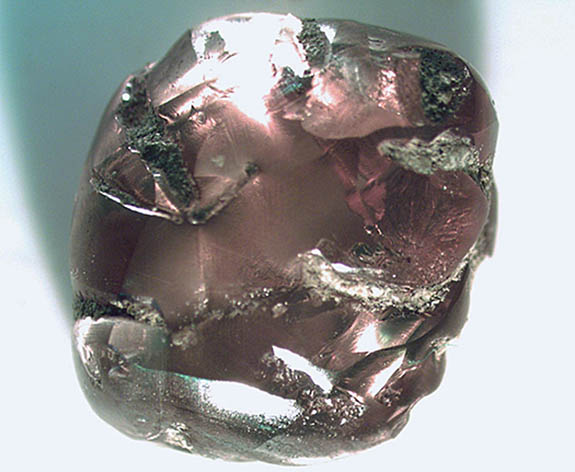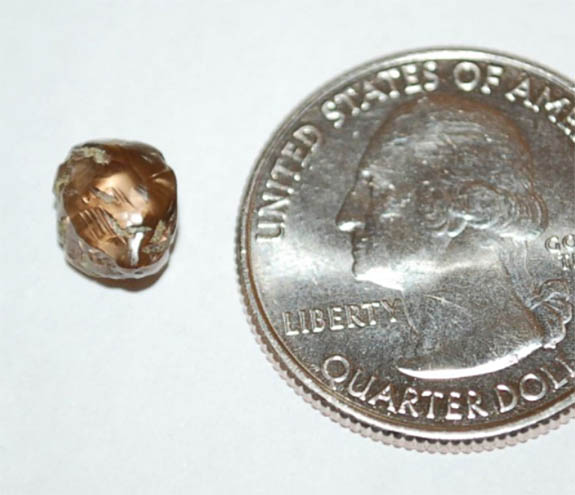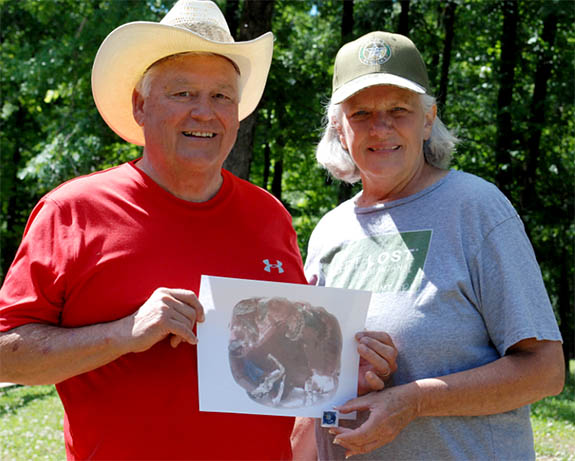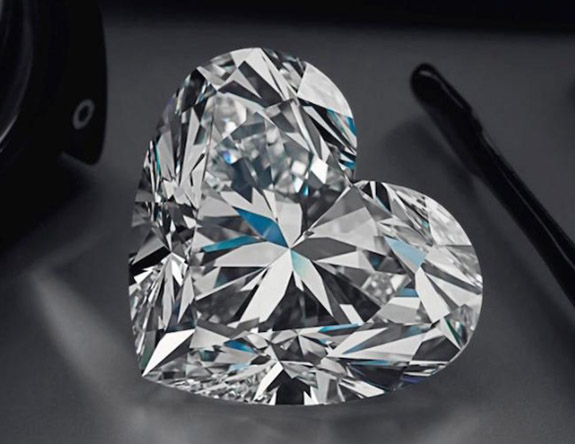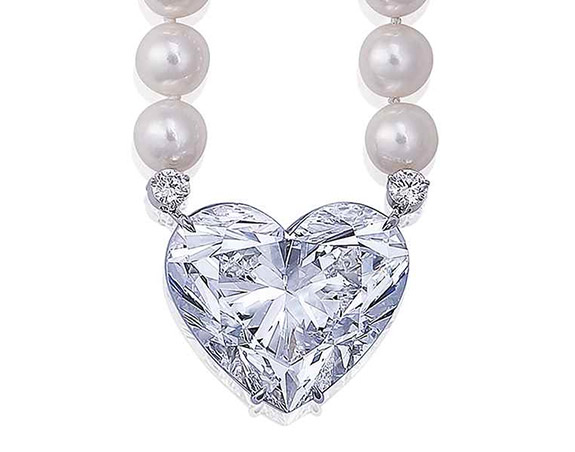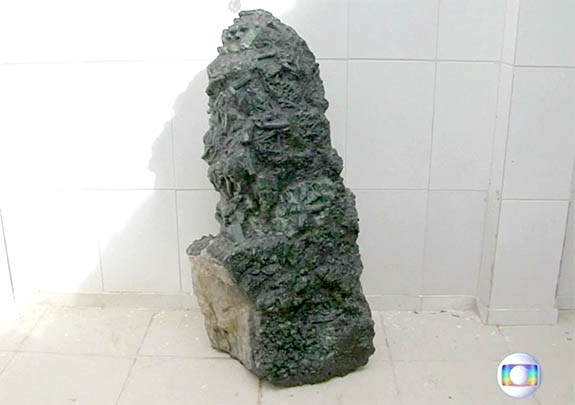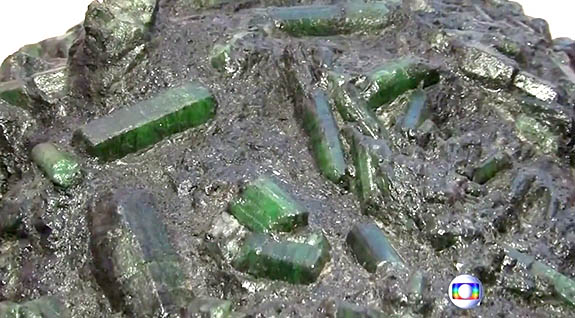Social media has been a game changer for bridal jewelry, particularly on Pinterest, where the most popular engagement ring on that image-sharing platform has garnered an astonishing 103,900 pins and worldwide attention.
In a surprising twist on a classic, this dainty rose gold stunner features a 1.22-carat brilliant round solitaire set with four prongs on a simple band. The engagement ring is complemented by a two-millimeter milgrain rose gold wedding band accented with small round diamonds. Simple yet magnificent. Retro yet modern.
According to Metro News UK, the ubiquitous ring was custom-designed by its owner, Sylvia Billone, who was inspired by images on Pinterest. The ring stands in stark contrast to last year’s most popular engagement ring, the “Verragio Venetian,” an ornate 18-karat white gold ring centered by a princess-cut diamond.
Rose gold is an alloy made from gold and copper. Colors range from to dusky pink to yellow-orange depending on the ratio of gold to copper. The sugary pink tone has captured hearts since its inception in nineteenth-century Russia, when Carl Fabergé blended yellow gold with copper to create a blush-toned hybrid called “Russian gold.” Cartier’s use of the composite during the 1920s Art Deco period reinforced its popularity.
Trend research indicates that more couples are selecting distinctive rose gold as their metal of choice for engagement rings and wedding bands. While rose gold can feel retro, the metal works surprisingly well for modern designs. The warm hues of rose gold beautifully show off diamonds and other gemstones.
The rose gold shade shined brightly in 2016 when Rose Quartz was named a Pantone Color of the Year along with Serenity blue. According to Pantone, “as consumers seek mindfulness and well-being as an antidote to modern day stresses, welcoming colors that psychologically fulfill our yearning for reassurance and security are becoming more prominent.” According to Allure.com, the most sought after items are swathed in the opulent blush of rose gold. Described a hue between icy white gold and warm yellow gold, rose gold is whimsical and romantic.
According to The Next Web, the rose gold phenomenon really exploded in popularity on the social media scene since the 18-karat rose gold “tech luxury” Apple Watch arrived in September 2014. Then came the wildly popular rose gold iPhone 6s. For personal tech gadgets, rose gold proved to be a welcome change from largely impersonal, cool-toned metallics. According to CNET, rose gold “is the new black” for gadgets, and the hottest option for iPhones, MacBooks and Beats headphones – often causing a "preorder frenzy."
Rose gold-colored accents are even popping up in unexpected places, including interior design. "It's definitely a trend and not a classic look," says Maria Killam, an interior designer and color expert. "Metals for interiors have been getting warmer recently, and now that gold is dominating the scene, rose gold has a strong place on the edge of the trend for those who love to push the limits."
Credits: Images via Pinterest/Sylvia Billone.
